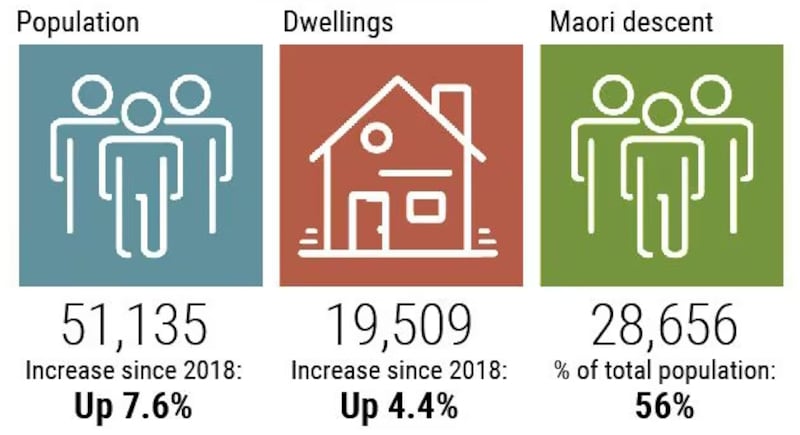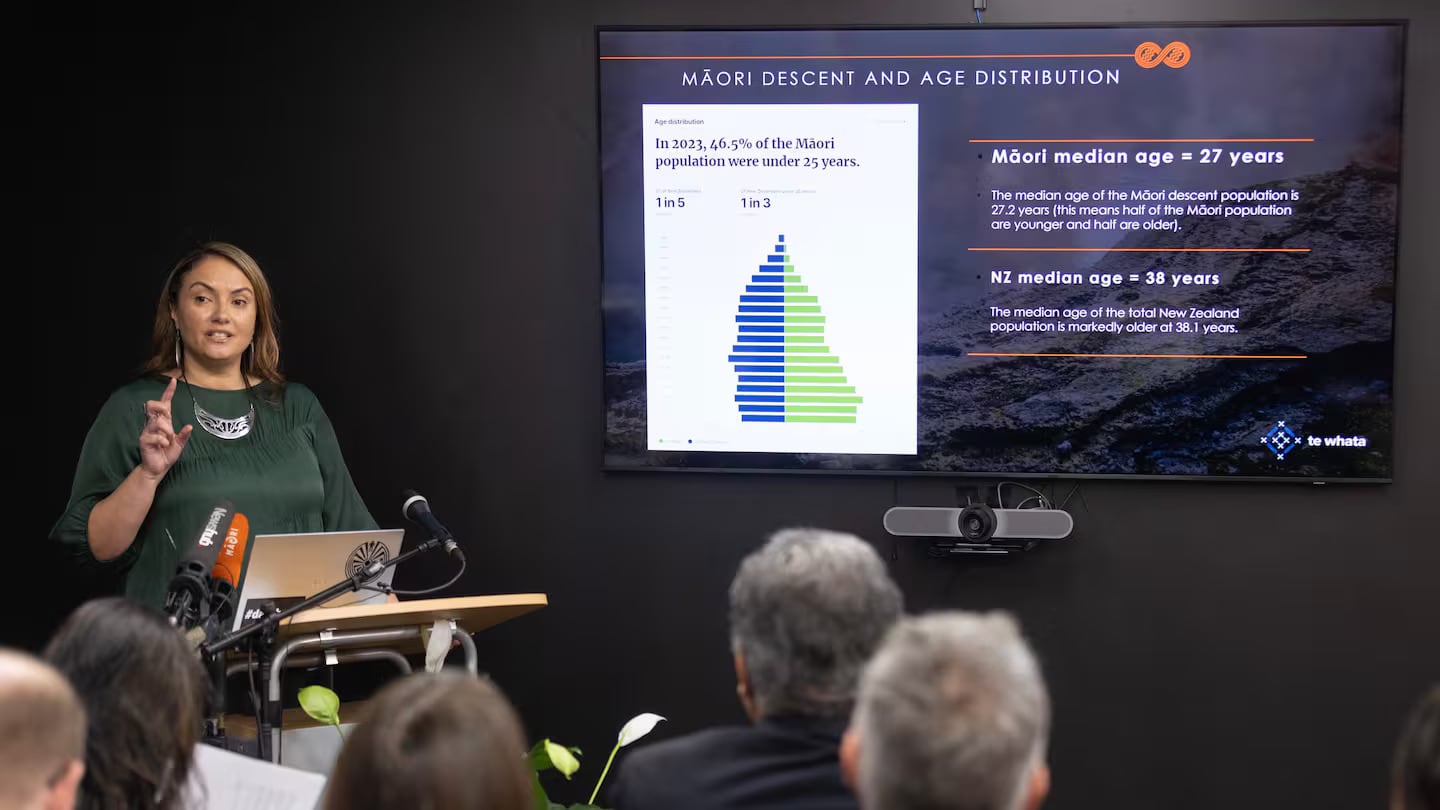This article was first published by NZME.
Public Interest Journalism funded through NZ On Air
Gisborne Tairāwhiti has the highest proportion of residents of Māori descent in all of Aotearoa New Zealand, according to data from the 2023 Census.
Fifty-six per cent of the Gisborne population are of Māori whakapapa, and 70.4 per cent of those under 25 in the region are Māori.
This was announced on Wednesday morning by Te Kahu Rarauranga and Stats NZ, who also released a new platform, Te Whata, for information about Māori from the 2023 Census.
The other regions with a high Māori proportion are Northland (39.9 per cent) and Bay of Plenty (32.9 per cent).
Kirikowhai Mikaere, Te Kāhui Raraunga Pou Arahi/Aho Tapu, said the statistics are awesome for Māori.
“Māori have a very young age structure, with one in three under 25 being Māori across the country,” Mikaere said.
She acknowledged Toitū Tairāwhiti, a collective made up of Te Rūnanga o Tūranganui-a-Kiwa and Te Rūnanganui o Ngāti Porou, who led the census collection last year in Gisborne.

“What we saw compared to 2018 is that those iwi-led collection areas exceeded the response to the previous census and it just really reflects the trust the iwi have in their communities and how well they know their communities to get that type of engagement and participation.
“I don’t doubt that has attributed to that result for us.”
The other reason for the increase is because the Māori population is younger and generally have their children at a younger age.
“We also have a higher fertility rate - we have what they call a built-in momentum to grow.”
The usually resident population was 51,135 in 2023, up 7.6 percent from 2018.
Gisborne ethnicity proportions in 2023:
- 56.5 percent were European
- 54.8 percent were Māori
- 5.6 percent were Pacifica
- 3.8 percent were Asian
- 0.7 percent were Middle Eastern/Latin American/African (MELAA)
- 0.9 percent were ‘Other ethnicity’
Ethnic group is a self-determined affiliation, with people identifying as belonging to one or more ethnicities.
Māori counts are measured in two ways in the census. Māori descent is based on whakapapa, while ethnicity is self-determined cultural affiliation.
Not all people with Māori descent identified Māori as their primary ethnic background.
The median age of people living in Gisborne in 2023 was 36.7 years, compared to 37 years in 2018.
There were 19,509 dwellings counted in the census, an increase of 4.4 percent since 2018.
Two main data releases will follow in late September and November, with a series of topic releases to be published from November to August 2025.
By Matai O’Connor of NZME.



